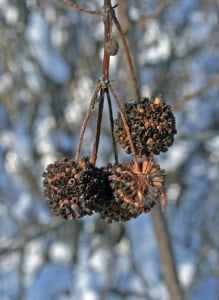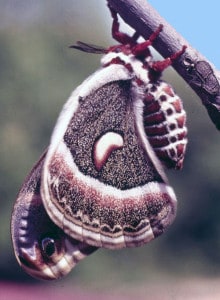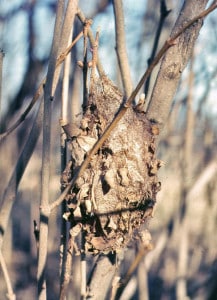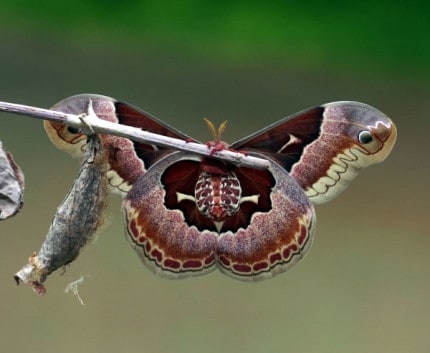

(Chelsea Update would like to thank Tom Hodgson and the Waterloo Natural History Association for the information and photos in this column.)
Winter has finally arrived.
Those who have been waiting for safe ice for fishing and skating will soon be able to rejoice. This is also a good time to explore some area wetlands. The Chelsea area is blessed with an abundance of wetlands on both public and private lands. Unfortunately because they are wet, they are not particularly visitor friendly most of the year.
The winter season is the one exception. Wetlands are usually frozen solid by January and readily available for exploration until the spring thaw.
One of the easiest wetlands to explore is the buttonbush swamp. There are many small, shallow, seasonal ponds and swales that support wetland shrubs including buttonbush.
Buttonbush gets its name from the round seed heads that adorn its bare, winter branches. They not only make buttonbush easy to recognize, but are an important natural food source for winter birds. So while exploring, one may also come across a number winter birds including chickadees, titmice and various sparrows.

During the summer, buttonbush leaves are a preferred food source for the caterpillars of two species of giant silk moth, the cecropia and promethea. By the end of the summer, these caterpillars have hidden themselves in silken cocoons that remain attached to the branches of their host until the following June. During the winter season, with careful observation, one can find these cocoons hidden among the leafless branches.
The cecropia cocoon looks like a small brown, silken bag adorned with dried, brown leaves. The promethean cocoon is smaller and usually wrapped in a single leaf. Inside of each cocoon is a single pupa, looking a lot like a little, brown mummy; that will remain dormant until June when the beautiful adult moth will emerge.

An image included with this article shows a cut away cocoon with the pupa inside. Note the head and antennae at the top, the unexpanded just below. Below the wings is the segmented abdomen. If you look carefully, the shed caterpillar skin is at the bottom. Silk moths are non-feeding, living just long enough to mate and lay eggs.
The cecropia is Michigan’s largest moth with a wingspan of about 6 inches.
The promethea is slightly smaller, but no less beautiful. The promethea flies in late afternoon and evening, while the cecropia is strictly nocturnal.
Finding a good cecropia cocoon can be a challenge. They are often drilled open by downy woodpeckers for the nutritious pupa inside. As a result, only about one in 20 cecropia cocoons found in winter has not already suffered from woodpecker predation. Promethea cocoons usually fair better, but are often the victims of parasitic wasps.

How can one tell if a cocoon is good? If a cecropia cocoon has a hole drilled in the side it is definitely been visited by a woodpecker and the pupa is gone. If not, it could still be good. To identify a good ceropia or promethean cocoon, gently shake it while holding up to your ear. If a dull thud is heard, the cocoon is good. If a dry rattling sound or no sound at all is heard it is probably not good.
Once collected from the wild, the living thing inside the cocoon is now the responsibility of the collector. Cocoons should be stored in a large ventilated jar and placed in an unheated building such as a garage or shed to prevent them from emerging too early. Bring the container into the house in late May. Place a stick inside the container to give the emerging moth something to climb onto so that it may spread its wings properly.
Release the promethea moths in late afternoon and the cecropias just before dark. Releasing them will enable one to see and appreciate their beauty and still allow them to find mates and lay eggs for the next generation.

























Great story. Hope to go to the swamp as soon as the ice refreezes.